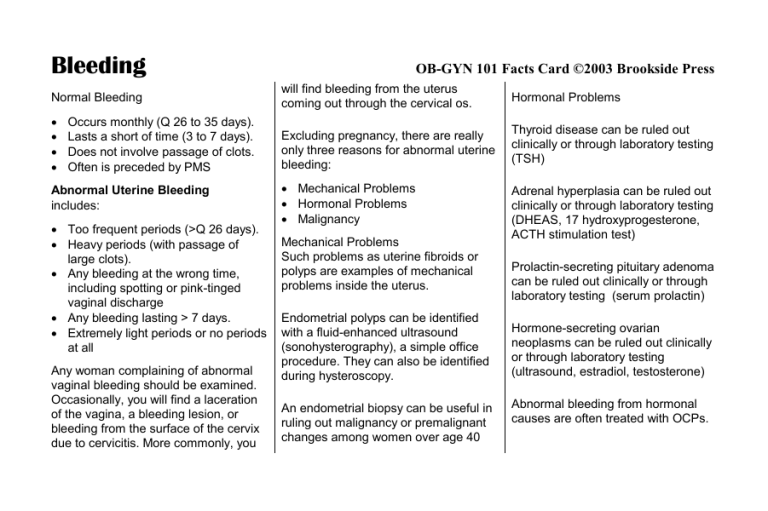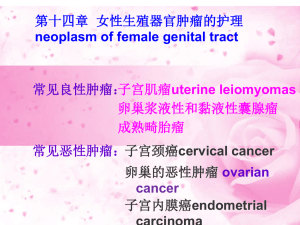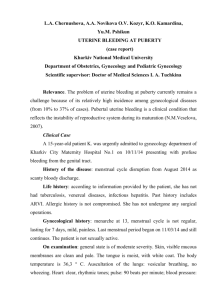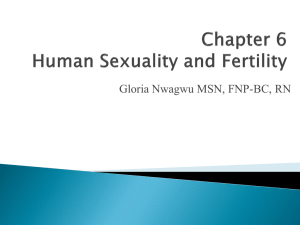Bleeding
advertisement

Bleeding OB-GYN 101 Facts Card ©2003 Brookside Press Normal Bleeding will find bleeding from the uterus coming out through the cervical os. Hormonal Problems Excluding pregnancy, there are really only three reasons for abnormal uterine bleeding: Thyroid disease can be ruled out clinically or through laboratory testing (TSH) Occurs monthly (Q 26 to 35 days). Lasts a short of time (3 to 7 days). Does not involve passage of clots. Often is preceded by PMS Abnormal Uterine Bleeding includes: Too frequent periods (>Q 26 days). Heavy periods (with passage of large clots). Any bleeding at the wrong time, including spotting or pink-tinged vaginal discharge Any bleeding lasting > 7 days. Extremely light periods or no periods at all Any woman complaining of abnormal vaginal bleeding should be examined. Occasionally, you will find a laceration of the vagina, a bleeding lesion, or bleeding from the surface of the cervix due to cervicitis. More commonly, you Mechanical Problems Hormonal Problems Malignancy Mechanical Problems Such problems as uterine fibroids or polyps are examples of mechanical problems inside the uterus. Endometrial polyps can be identified with a fluid-enhanced ultrasound (sonohysterography), a simple office procedure. They can also be identified during hysteroscopy. An endometrial biopsy can be useful in ruling out malignancy or premalignant changes among women over age 40 Adrenal hyperplasia can be ruled out clinically or through laboratory testing (DHEAS, 17 hydroxyprogesterone, ACTH stimulation test) Prolactin-secreting pituitary adenoma can be ruled out clinically or through laboratory testing (serum prolactin) Hormone-secreting ovarian neoplasms can be ruled out clinically or through laboratory testing (ultrasound, estradiol, testosterone) Abnormal bleeding from hormonal causes are often treated with OCPs.











